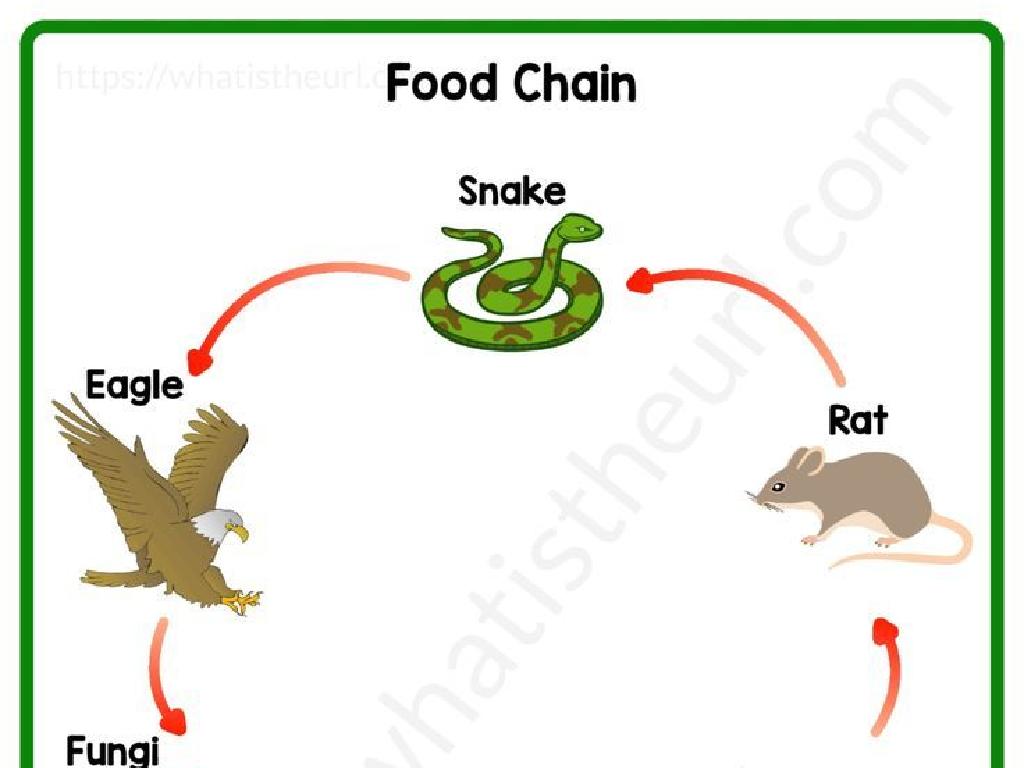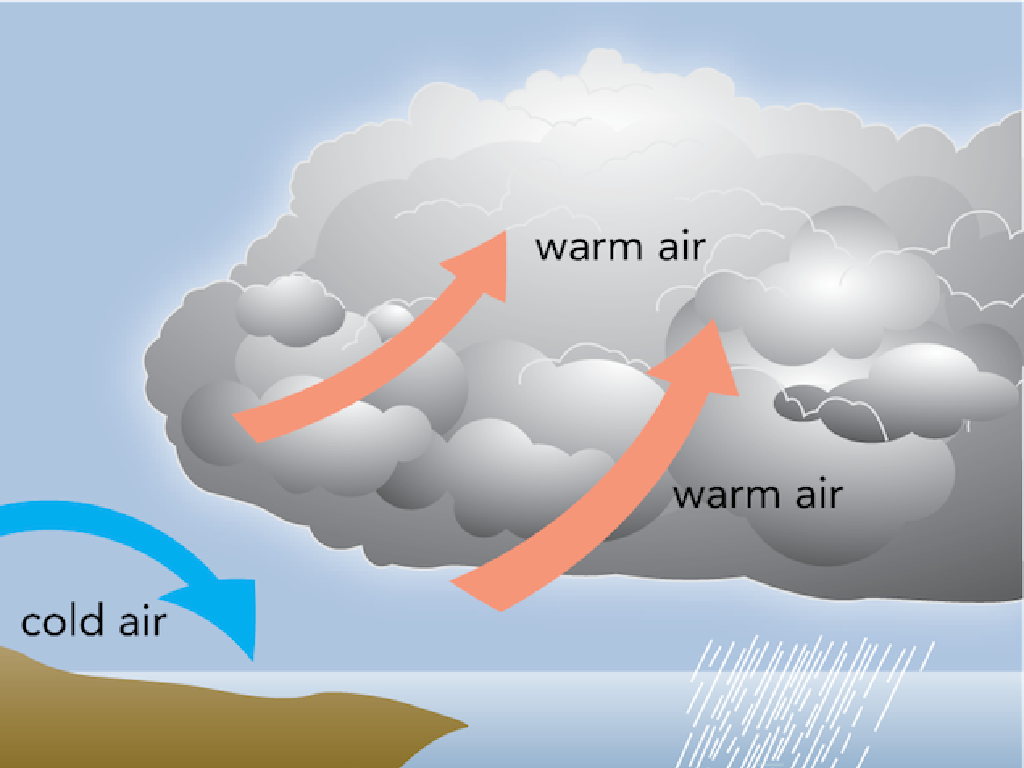Is The Pronoun Reflexive Or Intensive?
Subject: Language arts
Grade: Sixth grade
Topic: Pronoun Types
Please LOG IN to download the presentation. Access is available to registered users only.
View More Content
Pronoun Types: Reflexive vs. Intensive
– Today’s focus: Reflexive or Intensive?
– Pronouns in daily language
– Words that take the place of nouns, e.g., he, she, it
– Quick recap on pronouns
– Pronouns are words like ‘I’, ‘you’, ‘he’, ‘she’, ‘it’, ‘we’, ‘they’
– Examples of each pronoun type
– Reflexive: ‘She taught herself.’ Intensive: ‘The CEO himself presented the award.’
|
This slide introduces the concept of reflexive and intensive pronouns, building on the students’ existing knowledge of pronouns. Start by engaging students with examples of pronouns in sentences they use every day. Then, provide a brief review of what pronouns are, to ensure all students are on the same page. Move on to explaining the difference between reflexive pronouns, which refer back to the subject, and intensive pronouns, which emphasize the subject. Use clear examples for each to illustrate their use in sentences. Encourage students to come up with their own sentences as practice.
Reflexive Pronouns Explained
– What are reflexive pronouns?
– Pronouns that refer to the subject
– They reflect back to the subject
– Like a mirror reflecting the subject
– Examples: myself, yourself, himself
– ‘I did the homework myself’, ‘She made herself a sandwich’
– Usage in sentences
– ‘He bought himself a bike’, ‘We taught ourselves’
|
This slide introduces reflexive pronouns, which are used when the subject and the object of a sentence are the same. Emphasize that these pronouns ‘reflect’ the action back onto the subject, much like a mirror. Provide clear examples using common reflexive pronouns to illustrate their use in everyday language. Encourage students to think of situations where they might use reflexive pronouns in their own sentences. This understanding is crucial for distinguishing between reflexive and intensive pronouns, which will be covered in subsequent lessons.
Exploring Intensive Pronouns
– What are Intensive Pronouns?
– Pronouns that emphasize a noun or pronoun
– Intensive Pronouns add emphasis
– They do not change the meaning of the sentence
– Examples: I myself, you yourself
– ‘I myself finished the project.’ ‘She herself baked the cake.’
– Usage in sentences
– Learn to spot them in books or your writing
|
Intensive pronouns are used to add emphasis to a statement. They refer back to the subject of the sentence. Unlike reflexive pronouns, they are not essential to the meaning of the sentence and can be removed without changing the sentence’s structure. Provide students with examples and ask them to create sentences using intensive pronouns. Encourage them to understand that these pronouns are used for stressing the action performed by the subject without altering the sentence’s outcome.
Reflexive vs. Intensive Pronouns
– Differentiating pronouns
– Reflexive pronouns are essential
– ‘Herself’ in ‘She saw herself.’ is needed for the sentence.
– Intensive pronouns are removable
– ‘Himself’ in ‘The president himself gave the award.’ can be removed.
– Practice identifying each type
– Use example sentences to determine the pronoun type.
|
This slide aims to help students distinguish between reflexive and intensive pronouns, which are both types of pronouns that end in -self or -selves. Reflexive pronouns are used when the subject and the object of the sentence are the same, and they are necessary for the sentence to make sense. Intensive pronouns emphasize a noun or another pronoun and can be removed without altering the meaning of the sentence. Provide students with additional examples and exercises to practice. For instance, ‘I made myself a sandwich’ uses a reflexive pronoun because it is required for the sentence to work. In contrast, ‘I myself made a sandwich’ uses an intensive pronoun, which could be left out. Encourage students to create sentences using both types of pronouns for better understanding.
Reflexive vs. Intensive Pronouns
– Reflexive pronouns in action
– Pronouns that refer back to the subject, e.g., ‘I made myself a sandwich.’
– Intensive pronouns for emphasis
– Pronouns that emphasize a noun or another pronoun, e.g., ‘The president himself gave the order.’
– Example 1: Reflexive use
– Example 2: Intensive use
|
This slide aims to help students differentiate between reflexive and intensive pronouns through examples. Reflexive pronouns are used when the subject and the object of the sentence are the same, and they are necessary to the meaning of the sentence. Intensive pronouns, on the other hand, are used to emphasize another noun or pronoun and can be removed without altering the meaning of the sentence. Encourage students to identify the pronouns in sentences they come across and determine whether they are reflexive or intensive by looking at their function and whether the sentence still makes sense without them.
Let’s Practice: Reflexive vs. Intensive Pronouns
– Activity: Identify the Pronouns
– Determine: Reflexive or Intensive?
– Is the pronoun emphasizing a noun or is it needed to make sense of the sentence?
– Group Practice with Examples
– We’ll work through examples as a class to understand the difference.
– Individual Practice
– Find examples in your own reading to share.
|
This slide is for a class activity to help students differentiate between reflexive and intensive pronouns. Begin by explaining the activity and its purpose. Reflexive pronouns reflect back to the subject of the sentence (e.g., ‘She made herself a sandwich.’), while intensive pronouns emphasize a preceding noun (e.g., ‘The chef himself cooked the meal.’). Start with group practice, where you provide sentences and work through them together to identify the pronouns and categorize them as reflexive or intensive. Afterward, allow students to try individually, finding examples in their own reading material. Encourage them to explain why a pronoun is reflexive or intensive for a deeper understanding. Provide guidance and support throughout the activity.
Your Turn to Shine: Pronoun Practice
– Pair up for pronoun identification
– Find pronouns in provided sentences
– Decide: Reflexive or Intensive?
– Reflexive: refers back to the subject, e.g., ‘She herself.’
– Share your answers with the class
– Intensive: emphasizes a noun, e.g., ‘The CEO himself.’
|
This class activity is designed to reinforce the students’ understanding of reflexive and intensive pronouns. Have the students work in pairs to foster collaboration. Provide them with sentences containing pronouns and ask them to identify each pronoun and determine whether it is reflexive or intensive. Reflexive pronouns reflect back to the subject and are necessary to the meaning of the sentence, while intensive pronouns emphasize a preceding noun and can be removed without altering the sentence’s meaning. After the activity, encourage pairs to share their findings with the class to facilitate a group discussion and address any misconceptions. Possible sentences for the activity: 1) ‘I made myself a sandwich.’ 2) ‘The manager approved the document himself.’ 3) ‘They bought themselves new bicycles.’ 4) ‘The artist painted the portrait herself.’
Review and Reflect: Pronoun Types
– Recap of today’s lesson
– Importance of pronoun distinction
– Knowing the difference helps in accurate language use and understanding nuances.
– Share your own sentence
– Example: ‘I myself completed the project.’ (intensive) or ‘She prepared herself.’ (reflexive)
– Reflect on pronoun usage
|
This slide aims to consolidate the day’s learning about reflexive and intensive pronouns. It’s crucial for students to differentiate between the two as it affects the meaning of sentences and is a key skill in mastering the complexities of English grammar. By sharing sentences they’ve created, students apply their knowledge and demonstrate understanding. Encourage them to explain why they used a reflexive or intensive pronoun in their sentence. This reflection helps to reinforce their learning and allows for a personal connection to the material. As a teacher, be prepared to provide feedback and correct misunderstandings during this sharing time.
Homework: Reflexive vs. Intensive Pronouns
– Write 10 sentences with pronouns
– Circle each pronoun used
– Label pronouns as reflexive or intensive
– Reflexive: pronoun reflects back to the subject. Intensive: emphasizes a noun.
– Share your sentences next class
|
This homework assignment is designed to help students practice identifying and using reflexive and intensive pronouns correctly. By writing sentences, students will apply their knowledge of how reflexive pronouns are used to indicate that the subject of the sentence is also the object, and how intensive pronouns are used to emphasize another noun or pronoun in the sentence. Encourage students to think creatively and come up with sentences that clearly demonstrate their understanding of each pronoun type. In the next class, students will have the opportunity to share their sentences, allowing for peer learning and teacher feedback.





